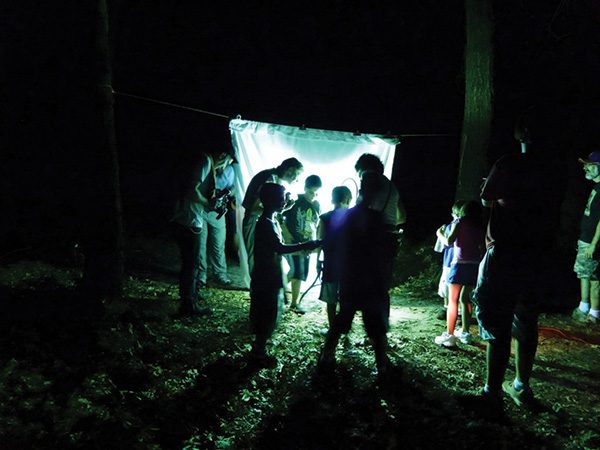
Keep those porch lights burning! National Moth Week is July 20 to 28, and it promises to be a fluttering good time.
It’s no surprise this burgeoning celebration of the mysterious creatures of the Lepidoptera order started in East Brunswick. The critter-friendly town shuts down a stretch of road each year for the spotted salamander migration and manages its own 11-acre butterfly park. It is also home to a group of scientists and wildlife enthusiasts, the Friends of the East Brunswick Environmental Commission, a nonprofit organization dedicated to bringing environmental programming to the community.
Two of the organization’s members, David Moskowitz, a wildlife studies specialist and PhD student in entomology at Rutgers University, and Liti Haramaty, a researcher at the Institute of Marine and Coastal Science at Rutgers, started hosting local moth nights at the butterfly park in 2006. “We were astonished at the first moth night, how successful it was,” says Moskowitz. They used a generator to power a 175-watt mercury vapor light bulb to attract the moths and tied a bedsheet between two trees for their landing. “People who had never experienced moths before were wowed,” he says.
The moth nights have evolved into National Moth Week, which is meant to raise awareness about the underappreciated cousins of the butterfly. Scientists don’t know as much about moth natural history, distribution, seasonality and species. That’s where citizen scientists can come in. Anyone with a porch light and a camera can participate and submit what they see to one of the many international organizations with which the Friends have partnered to collect data. “Every data point, every observation can be very important,” says Haramaty.
It is known that in New Jersey there are more than 3,000 species of moths, and they range in size from a pinhead to an adult hand and come in every conceivable color and shape, says Moskowitz. “They are amazingly diverse,” he says.
